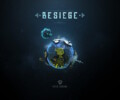
Developer: Chashu Entertainment
Publisher: Freedom Games
Platforms: PC
Tested on: PC
Sands of Aura – Review
A few weeks have passed since we last took a dive into our backlog, but now we’re back with a title that has been whipping up a storm since it was released last October… and even longer if we take 2021’s Early Access release into account. That title is Sands of Aura, an ARPG from Chashu Entertainment. It’s only the second game from the indie developer, but it appears to be a massive step up from their debut game Deputy Dangle. Of course, the ARPG market isn’t exactly devoid of great titles, so does Sands of Aura have what it takes to stand out?
Story
Before we can dive into Sands of Aura’s main story, we need to take a look at its worldbuilding. The game is set in Talamhel, a place that used to be a veritable utopia, where humanity thrived. When the hourglass of time is shattered, however, Talamhel is covered in magical sand that corrupts the world and its inhabitants. All that remains now are ruins, scattered across a massive desert, and small pockets of civilization, almost like islands in an ocean of sand. It’s a world where water is the most precious resource of all. Unfortunately, the town of Starspire is running dangerously low on this, because they had to use a significant amount of their reserve to put out a fire. This is where the Remnant Knights come in: these noble protectors of humanity must seek a way to replenish Starspire’s reservoir. As it so happens, you’re one of these Knights. When you and your mentor Lawrence discover that the nearest source of water to Starspire has become tainted, you have no choice but to set out to find a fresh source. This inevitably sets you on an adventure across the vast desert, where you won’t just find H2O, but the truth about Talamhel’s downfall as well.
Graphics
The impressive worldbuilding that is being utilized here doesn’t just limit itself to Sands of Aura’s lore. If you were thinking that setting a game in a massive desert would make for a game lacking in visual variety, you’d be wrong, as the ruins you encounter belong to different cultures, each with their own visual identity. Even on mid-range hardware, Sands of Aura managed to conjure up jaw-dropping vistas that successfully convey both a sense of scale and paint a picture of the tragic history of Talamhel. Granted, the environments are the stars of the show, as the character designs don’t carry the same visual oomph. Don’t get us wrong, they still look good, but they were a bit too stylized and cartoonish for the atmosphere that the story sets up.
Sound
Accompanying the gorgeous landscape is a surprisingly subdued soundtrack that adds an air of mystery to the game’s plethora of ancient ruins. It’s varied but never takes center stage, not even during the epic boss fights. On the other hand, there’s the voice acting, which easily ranks among some of the most infuriating game audio we’ve had the displeasure of hearing. The issues here aren’t the voice performances themselves, or at least not all of them, but the horrendous audio mixing. The volume and intelligibility of voice lines are all over the place. There are instances where this changes within a few sentences of the same character. Add to this that there are unfortunately a handful of phoned-in performances here, and you’ve got a soundscape that isn’t quite up there with the rest of Sands of Aura’s quality.
Gameplay
Although Sands of Aura’s Soulslike combat drew a lot of attention during the game’s Early Access period, the game is still an open-world(-ish) ARPG first and foremost, with a heavy focus on exploring the desert-like landscape of Talamhel. There is a tremendous sense of freedom from the get-go, with the power level of enemies feeling like your only real restriction initially, although some areas of the game are actually blocked off by story events. Of course, the main story still gently nudges you in the direction that you need to go, and there are plenty of incentives to explore your surroundings. You can track down manuals for upgrading your equipment or find NPCs that will help you expand your hometown of Starspire, which acts as your main hub area and base. Oh, and did we mention that you have an awesome ship that lets you cross the vast ocean of sand? Between exploring, focusing on the main story, managing Starspire, and grinding for resources, there is a lot to keep track of. One minor gripe related to this is that the game opts for a very minimalistic user interface. While this is great for immersion, as the less clutter there is on screen the better, this does mean that you don’t necessarily have access to all the information you’d want at a glance. We’d have loved a mini-map that shows us where to go next without having to pull up the full game map, for example. Likewise, gauges or timers for temporary effects would have been very handy here.
Combat is more forgiving than what you’d expect from a game that is being billed as Soulslike. Don’t get us wrong, it’s still decently challenging and you’ll die plenty of times, especially if you rush in unprepared, but death never feels unfair or cheap. It’s a learning experience throughout as you figure out enemy attack patterns and learn which weapons and spells are the most effective tools to use to claim victory. Of course, you’ll need to master the noble arts of dodging and parrying as well. Success in combat yields currency, which in turn lets you upgrade your weapons, rinse, and repeat. There are seven completely different weapon styles and hundreds of weapons. Some are more effective than others against specific enemies, so you’re going to want to build up several different setups rather than stick with just one and brute force your way through. As such, you’ll probably need to do plenty of experimenting, especially since all weapon sets start at level one. This does mean that Sands of Aura can be a bit grindy at times, but never to the point that it detracts from the overall experience.
We do recommend tackling Sands of Aura with a controller rather than a mouse and keyboard setup, as there was a noticeable difference. While using the latter setup, jumping and falling in particular felt floaty, something that wasn’t an issue when playing with the former option. Given that this isn’t a short game, clocking in at roughly 30 hours for the main story, you’re going to want the more comfortable option. With several difficulty levels to choose from alongside that huge arsenal, the game also oozes tons of replayability. This is a game that is likely going to be more enjoyable on the second playthrough, at a higher difficulty, as you can then employ the knowledge you’ve built up to the fullest, especially since the sheer amount of things to do can feel overwhelming the first time around.
Conclusion
With its satisfying combat, fantastic worldbuilding, and a plethora of weapon loadouts, there are plenty of reasons to keep returning to Sands of Aura, even after the credits roll for the first time. There definitely are weak points here, like the unoptimized mouse-and-keyboard controls and the atrocious dialogue mixing, but the good outweighs the bad by a significant margin. If you’re looking for a meaty ARPG that you can really sink your teeth into, we absolutely recommend picking up Sands of Aura.









No Comments